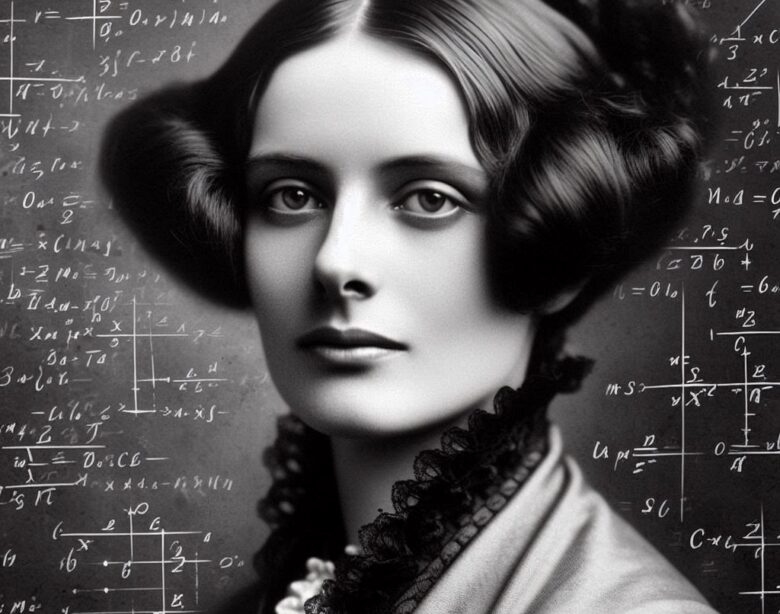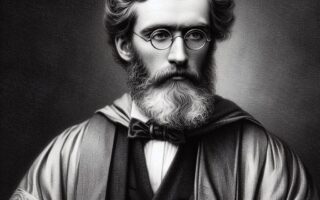Celebrating Ada Lovelace: The Enchantress of Numbers and Her Enduring Legacy in Math and Science
Ada Lovelace, born Augusta Ada Byron on December 10, 1815, in London, England, is celebrated as a pioneering figure in the history of computing. She is often considered the world’s first computer programmer, thanks to her visionary work on Charles Babbage’s early mechanical general-purpose computer, the Analytical Engine. Lovelace’s contributions to mathematics and the sciences extend beyond her work with Babbage, as she foresaw the potential of computers to perform more than just numerical calculations.
Early Life and Education
Ada Lovelace was the daughter of the famous poet Lord Byron and Anne Isabella Milbanke, an accomplished mathematician in her own right. However, Lord Byron separated from his wife shortly after Ada’s birth and left England, never to return. Ada was raised solely by her mother, who was determined to prevent her from developing the perceived “madness” of her father. As a result, Anne Isabella ensured that Ada received a rigorous education in mathematics and science, an unusual choice for a girl of her time.
Ada’s talent for mathematics became evident at a young age. She was tutored by leading mathematicians of the day, including Augustus De Morgan, who recognized her exceptional abilities. Her passion for mathematics and science was further fueled by her mother’s encouragement and the intellectual environment in which she was raised.
Meeting Charles Babbage
In 1833, at the age of 17, Ada Lovelace was introduced to Charles Babbage, a mathematician, philosopher, inventor, and mechanical engineer who is best known for his concept of the programmable computer. Babbage was working on a prototype for his Difference Engine, a machine designed to perform mathematical calculations. Ada was fascinated by Babbage’s work, and the two developed a close intellectual partnership.
Babbage soon began working on a more ambitious project, the Analytical Engine, a mechanical general-purpose computer designed to perform any calculation or algorithm. Unlike the Difference Engine, the Analytical Engine was programmable and could be instructed to perform a sequence of operations. Ada was captivated by the possibilities of this machine and began to study Babbage’s designs in depth.
The Analytical Engine and Ada’s Notes
Ada Lovelace’s most significant contribution to the field of computing came in 1843 when she translated an article on the Analytical Engine written by the Italian mathematician Luigi Federico Menabrea. At Babbage’s request, Ada supplemented the translation with her own notes, which turned out to be three times longer than the original article. These notes, labeled A to G, contained her insights into the workings and potential of the Analytical Engine.
In Note G, Ada described an algorithm for the Analytical Engine to compute Bernoulli numbers, a sequence of rational numbers with deep connections to number theory. This algorithm is considered the first computer program, earning Ada Lovelace the title of the world’s first computer programmer. Her notes also included detailed descriptions of how the machine could be programmed using punched cards, a method later employed in early computers.
Visionary Insights
What truly set Ada Lovelace apart from her contemporaries was her visionary understanding of the broader implications of the Analytical Engine. While Babbage and others viewed the machine primarily as a tool for performing mathematical calculations, Ada foresaw its potential to manipulate symbols and perform tasks beyond arithmetic. She speculated that the machine could be used to create music, produce graphics, and even generate language.
Ada’s insight into the potential of computing machines to go beyond mere number-crunching laid the groundwork for the development of modern computers and programming. Her vision of a general-purpose machine that could be programmed to perform a variety of tasks anticipated the future of computing in ways that her contemporaries could not have imagined.
Challenges and Legacy
Despite her groundbreaking work, Ada Lovelace faced significant challenges due to her gender and the societal norms of her time. Women in the 19th century were rarely afforded the opportunity to pursue careers in science and mathematics, and Ada’s achievements were not widely recognized during her lifetime. Her contributions were largely forgotten until the mid-20th century when historians of computing began to rediscover her work.
Ada Lovelace’s legacy has grown considerably in recent decades, and she is now celebrated as a pioneer of computing. In 1980, the U.S. Department of Defense named a newly developed computer language “Ada” in her honor. Ada Lovelace Day, celebrated on the second Tuesday of October each year, aims to raise the profile of women in science, technology, engineering, and mathematics (STEM) and to celebrate their contributions.
Conclusion
Ada Lovelace’s contributions to mathematics and the sciences are profound and enduring. As the world’s first computer programmer, she laid the foundations for the field of computer science and foresaw the potential of computing machines to revolutionize the world. Her visionary insights into the capabilities of the Analytical Engine anticipated the development of modern computers and programming languages.
Ada Lovelace’s legacy is a testament to the power of imagination and intellectual curiosity. Her story serves as an inspiration to generations of scientists, mathematicians, and engineers, particularly women, who continue to break barriers and make groundbreaking contributions to STEM fields. As we celebrate her achievements, we are reminded of the importance of nurturing and recognizing talent, regardless of gender, and of the transformative potential of visionary thinking in the pursuit of knowledge and innovation.
Ada Lovelace’s work has had a lasting impact on the world of mathematics and computing, and her legacy continues to inspire new generations of innovators. Her story is a powerful reminder of the importance of perseverance, intellectual curiosity, and the ability to envision a future beyond the limitations of the present.
Please Visit Our Sponsors:
We only support vendors that we use ourselves in our home. The links below are our own links or affiliate links but know that we use all of these now, or have in the past. As the author/creator of this blog, I also tutor mathematics on Wyzant, sell on Etsy, create content on TpT, and learn Korean on Rosetta Stone.





